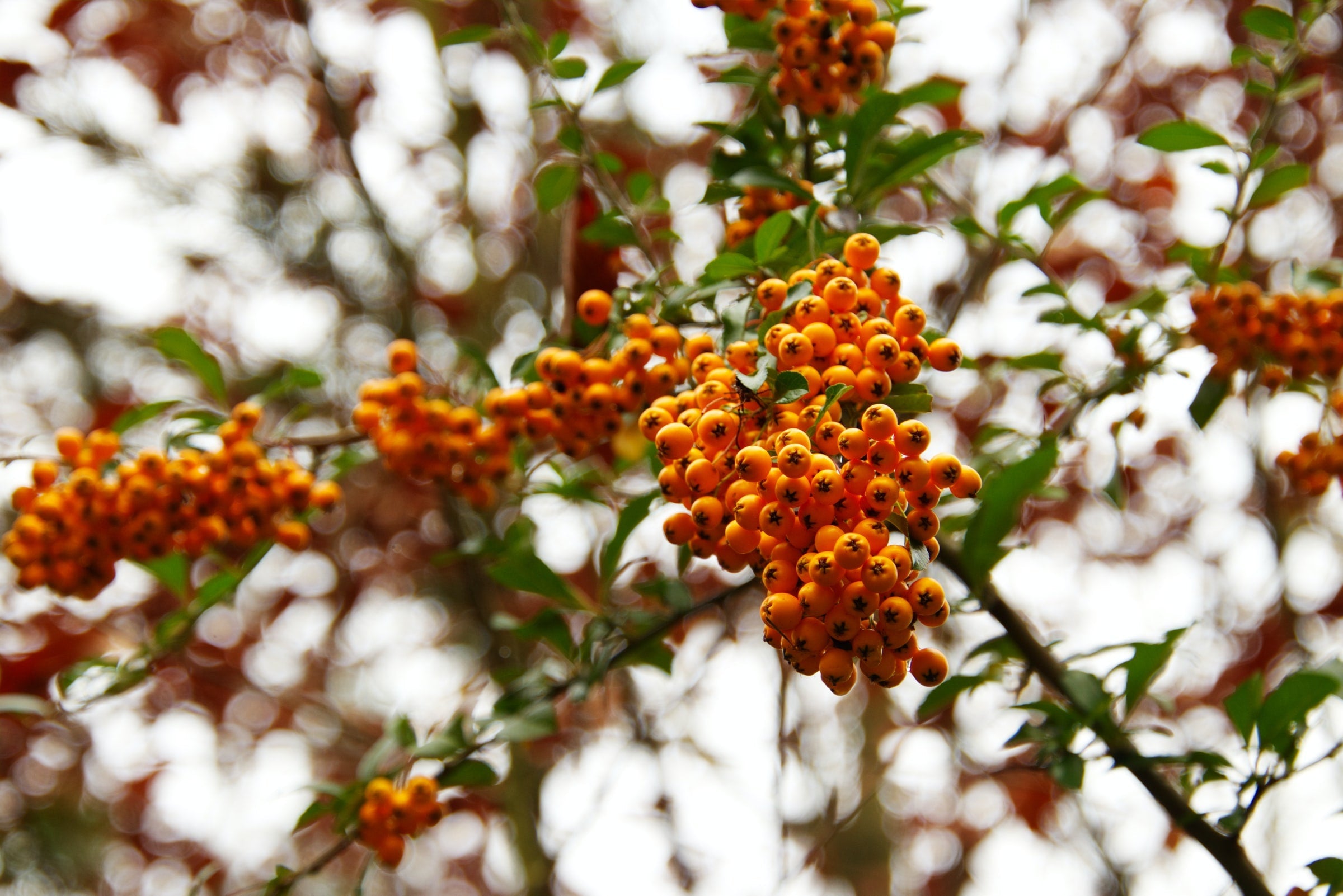How to choose and grow Pyracanthas
Pyracanthas, also known as firethorns, are attractive shrubs with profuse sprays of small, white flowers, alive with bees in spring, and brilliant berries, good winter feed for birds. Their dense, glossy leaves and thorny growth make a good nesting site. It’s also useful; as it’s so thorny, it’s a burglar and stock deterrent. It can be grown as a shrub, as hedging or trained against a wall. They can even be espaliered.
Pyracanthas are adaptable plants. They tolerate exposure, and can be grown in any moderately fertile, well drained soil, tolerating dry soils and heavy ones, as long as they’re not waterlogged. They will tolerate any aspect, but flowering and berrying will be reduced in shade, including north walls.
As members of the rose family, pyracanthas can fall victim to fireblight; they can also get pyracantha scab. However, they are generally robust, healthy plants.
How to plant pyracanthas
Prepare the soil by excavating a good-sized square hole and mixing some well-rotted manure or compost into the excavated soil with a fork. Then plant, keeping the soil mark on bare-rooted whips or the soil on a potted shrub at soil level, and back-fill with the enriched soil. Gently tread the soil in and water in well. If growing against a wall, put training wires in place first, and plant 20”/50cm out from the wall, as the base of a wall can be very dry; slope the plant toward the wall, so that it can easily be tied in. Hedging plants can be planted 20”/50cm apart, but if growing freestanding shrubs, which can grow as large as 13’ x 13’/4m x 4m, allow plenty of space around it.
Pyracanthas need watering in dry spells for the first two years while they establish; after that, they rarely need watering, apart from wall-trained shrubs, which need watering every ten days in times of drought, as the site can be so dry. Pyracanthas can be fed with a balanced fertiliser in late winter; a potash-rich one will encourage flowering and fruiting. Follow this with a 2” organic mulch.

Pruning and Training
As the shrub is so thorny, wear heavy leather gloves. Pyracanthas flower mainly on two year-old wood, so try to keep as much of it as possible.
Shrubs don’t need much pruning; just remove any shoots that spoil the symmetry, or branches with pyracantha scab (black scabby growths on leaves and berries). Hedges should be trimmed a couple of times between spring and the end of summer – some berries will be lost, but there it is.
Wall-trained and espaliered forms should have outward growing shoots pruned back, and also shoots growing towards the wall. Do this after flowering has finished. If you need to extend the framework, tie in the shoots while they are still flexible; pyracanthas can be trained round doors and windows. Then shorten side shoots from the main framework, stopping just short of the clusters of berries.
Choosing the best cultivar for your garden
Pyracanthas have yellow, orange or red berries, so choose whichever suits your colour scheme – the birds like them all.

Pyracantha Soleil d’Or is a shorter cultivar, 10’ x 10’/3 x 3m, with orange-yellow berries. Tough and hardy. Pyracantha Golden Charmer is another shorter, yellow cultivar.
Orange cultivars include Pyracantha Orange Glow, a more vigorous cultivar, 10’/3m tall with a spread of 7’/2.4m; it has a more erect habit than other pyracanthas, and would be very suitable for a hedge. Pyracantha Orange Charmer is of similar size and also has an erect habit.
Red cultivars include Pyracantha coccinea Red Column ism x 6’6”/1.8m. It’s particularly good for training up a wall or trellis in a smaller garden, and for hedging.
There are also dwarf forms, like Pyracantha Red Cushion, just 3’3”/1m tall x 6’6`’/2m wide, good for growing at the base of a wall. Pyracantha Flava has unusual arching growth, rather small leaves and a profuse mass of yellow berries in autumn. The French-bred Saphyr series, with red, orange and yellow berries, is particularly disease-resistant.





